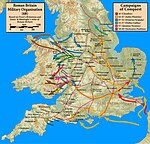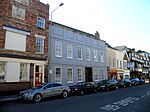St Mary de Lode Church, Gloucester
Church of England church buildings in GloucesterEnglish churches with Norman architectureGothic Revival church buildings in EnglandGrade I listed churches in GloucestershireHistory of Gloucester

St Mary de Lode Church is a Church of England church immediately outside the grounds of Gloucester Cathedral. It is believed by some to be on the site of the first Christian church in Britain. The church is in the Diocese of Gloucester and Grade I listed by English Heritage. It has also been known as St. Mary Before the Gate of St. Peter, St. Mary Broad Gate and St. Mary De Port.
Excerpt from the Wikipedia article St Mary de Lode Church, Gloucester (License: CC BY-SA 3.0, Authors, Images).St Mary de Lode Church, Gloucester
Saint Mary's Square, Gloucester Kingsholm
Geographical coordinates (GPS) Address External links Nearby Places Show on map
Geographical coordinates (GPS)
| Latitude | Longitude |
|---|---|
| N 51.8685 ° | E -2.2492 ° |
Address
Saint Mary de Lode
Saint Mary's Square
GL1 2QU Gloucester, Kingsholm
England, United Kingdom
Open on Google Maps










